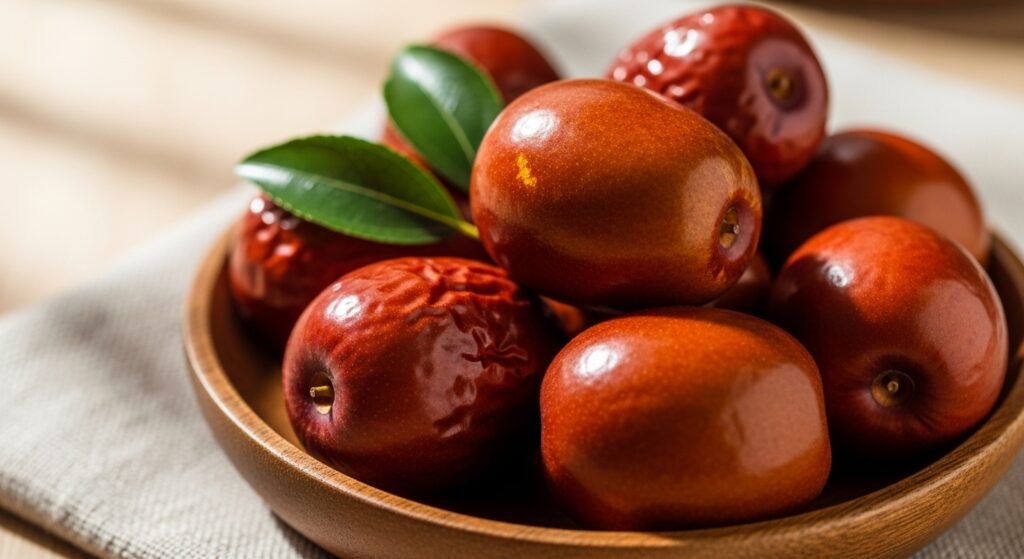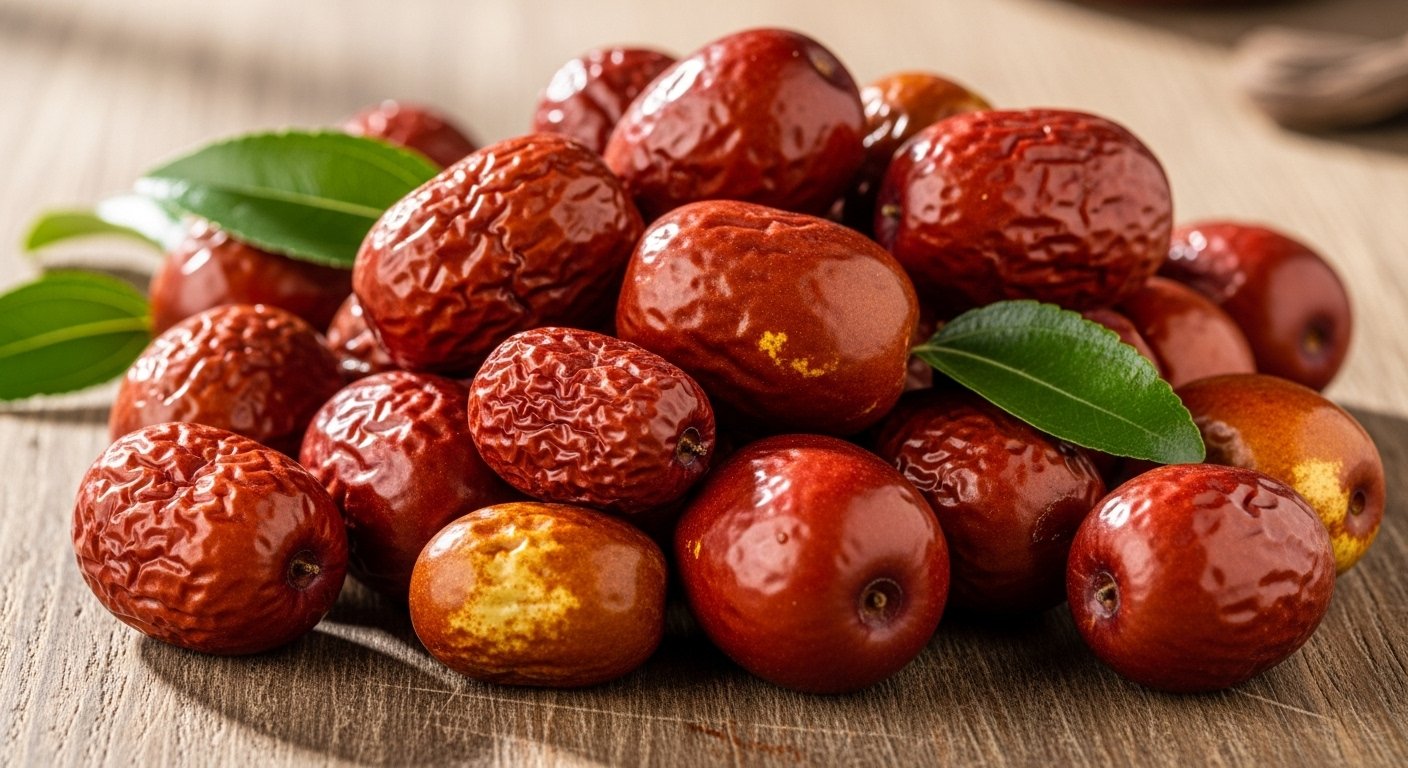Table of Contents
Introduction
Have you ever heard of žižole? They might just be your new favorite fruit! These small, sweet, and slightly chewy fruits come from a plant called the jujube tree. Sometimes folks call them Chinese dates, but don’t worry—they’re not regular dates. Žižole are something special all on their own.
In this article, you’ll learn everything about žižole. From their rich history, amazing health benefits, and fun ways to eat them—this guide has it all. We’ll keep it simple, fun, and super helpful. Whether you’re curious about trying žižole or already love them, you’re in the right place.
Let’s dive into the juicy world of žižole!
What Are Žižole?
Žižole are tiny fruits that grow on the jujube tree (Ziziphus jujuba). They look like little apples or dates, with smooth skin and a sweet, tangy flavor. When they’re fresh, they’re crunchy on the outside and soft inside. When dried, they turn chewy and even sweeter.
People have been eating žižole for over 4,000 years! That’s right—they’re super ancient. Originating in China, they are now loved across the world, especially in Mediterranean and Middle Eastern countries.
They grow best in warm climates and don’t need much water. So, they’re not just tasty; they’re eco-friendly too!
A Quick Look at the Jujube Tree
The jujube tree is a small but strong tree. It grows up to 10 meters high and can live for many years. In spring, it produces small, yellow-green flowers. The fruit starts green and ripens to a reddish-brown color.
These trees are easy to care for. Farmers love them because they’re drought-resistant and can grow in poor soil. Plus, they don’t need lots of chemicals or sprays. That’s great for the earth!
Names Around the World
The name “žižole” isn’t used everywhere. This fruit goes by many names depending on where you live:
- Jujube (English)
- Ziziphus (Scientific name)
- Dátlík (Czech)
- Chinee apple (Caribbean)
- Beri (India)
- Unnab (Arabic)
- Tsao (Chinese)
No matter the name, the taste is always delicious!
Health Benefits of Žižole
Žižole aren’t just yummy—they’re super healthy too. Here’s what they can do for your body:
1. Strengthen Your Immune System
They’re packed with Vitamin C, which helps your body fight off colds.
2. Better Sleep
Žižole contain natural plant compounds that help you sleep better and calm your mind.
3. Healthy Digestion
The fiber in žižole keeps your tummy happy and helps prevent constipation.
4. Energy Boost
Need a pick-me-up during the day? Žižole have natural sugars that give you quick energy without a crash.
5. Healthy Skin
Thanks to antioxidants, žižole help your skin look fresh and young.
How Do Žižole Taste?
Fresh žižole taste like a cross between an apple and a pear. They’re crisp, juicy, and just a bit tangy. When dried, the flavor changes. They become sweeter and chewier, similar to a date or prune.
Some people even say the chewy dried žižole taste like vanilla candy from nature!
Try them both ways to see which you like best.
Ways You Can Eat Žižole

There are so many fun and simple ways to enjoy žižole. Here are some ideas:
- Fresh off the tree – Wash and bite into them like an apple
- Dried as a snack – Great for lunchboxes or road trips
- Herbal tea – Slice a few and steep in hot water for a calming tea
- In salads – Chop and add to green salads for a sweet twist
- Baked goods – Add dried žižole to muffins or bread for extra sweetness
- Homemade jam – Combine with lemon and sugar for a yummy spread
Get creative, and you’ll find žižole work just like raisins or dates in most recipes!
How to Store Žižole
To keep žižole fresh and tasty, follow these easy storage tips:
Fresh Žižole
- Keep in the fridge in a sealed container
- Eat within a week for the best crunch
Dried Žižole
- Store at room temperature in an airtight jar
- They last up to 6–12 months if stored right
Tip: Keep dried žižole in your pantry for a quick, healthy snack anytime.
Growing Your Own Žižole
Want to grow your own žižole tree? Good news—you can! Here’s what you need:
- A sunny garden space
- Warm weather (they love sun)
- Good drainage in the soil
Plant a jujube sapling in early spring. Water it well during the first few weeks. After that, it doesn’t need much care. In a few years, you’ll be eating fresh žižole from your backyard!
Žižole in Traditional Medicine
Žižole have been used in natural medicine for thousands of years. In Traditional Chinese Medicine, they are called hong zao, and they’re used to:
- Reduce stress
- Improve digestion
- Support liver health
- Enhance immune strength
Modern studies are now confirming what ancient people already knew—this fruit is filled with healing powers!
Žižole in Culture and History
Žižole have a rich place in history and culture. In many regions, they are part of traditional ceremonies and foods:
- In China, they’re often eaten at weddings for good luck
- In parts of the Balkans, older folks remember žižole as a childhood treat
- In India, they’re used during spring festival rituals
- In Middle Eastern cultures, they’re added to soups and stews for flavor and sweetness
This little fruit truly brings people together!
Are Žižole Safe for Everyone?
Yes! Žižole are safe and healthy for most people. However:
- Diabetics should eat them in small amounts—they have natural sugars
- Always wash fresh fruits before eating
- For babies under 1 year, ask a doctor first before sharing
Otherwise, go ahead and enjoy this fruit with confidence!
Where to Buy Žižole
Depending on where you live, žižole may be found:
- At Farmer’s Markets (fresh, in the fall)
- In Asian or Middle Eastern grocery stores
- Online health food shops (usually dried)
If you see them at your local store, give them a try. You might just fall in love!
Fun Facts About Žižole
Let’s end with some fun knowledge:
- A single žižole tree can live up to 100 years
- Wild animals like birds and deer love them too
- In ancient texts, žižole were said to help with dreams and memory
- The jujube tree is related to the buckthorn family
- Some fancy skin creams use žižole extracts for anti-aging
Who knew such a small fruit could hold so much wonder?
FAQs
1. Are žižole the same as dates?
Nope! Though they look similar when dried, žižole come from a different plant. They taste and feel different too.
2. Can I eat žižole seeds?
No, don’t eat the seed in the middle. It’s hard and not edible—just enjoy the soft part around it.
3. Do žižole help you sleep?
Yes! Compounds in žižole naturally help relax your body and mind. Many people drink žižole tea at night.
4. What do žižole taste like?
Fresh žižole are crisp, like apples. Dried ones are sweet and chewy, like dates or figs.
5. Can I grow žižole from seed?
You can try, but it’s easier to grow from a young tree or cutting. Seeds take longer and may not grow well.
6. Are žižole good for kids?
Yes! They’re a healthy fruit for kids—just remove the seed before serving to young ones.
Conclusion
Now that you know all about žižole, why not give them a try? Whether fresh, dried, or brewed into tea, žižole are a flavorful and healthy choice for anyone. They’re easy to enjoy, simple to store, and packed with goodness.
You might even want to plant your own tree and grow this magical fruit yourself!
Have you tasted žižole before? Share your story with friends and family. Or better yet, ask for them at your local market—you might just inspire the next person to fall in love with this ancient, sweet treasure.






